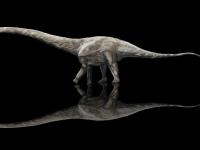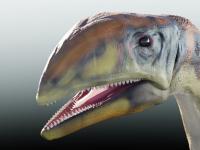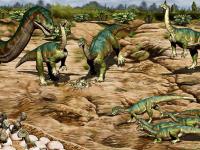Dryosaurus

Dryosaurus (meaning ‘tree lizard’) the name reflects the forested habitat, not a vague oak-leaf shape of its cheek teeth as is sometimes assumed) is a genus of an ornithopod dinosaur that lived in the Late Jurassic period. It was an iguanodont (formerly classified as a hypsilophodont). Fossils have been found in the western United States (and supposedly the Marnes de Bleville locality in Europe), and were first discovered in the late 19th century. Valdosaurus canaliculatus and Dysalotosaurus lettowvorbecki were both formerly considered to represent species of Dryosaurus.
Dryosaurus was an herbivorous ornithischian dinosaur, belonging to the Suborder Ornithopoda, and Family Hypsilophodontidae (gazelle-like, herbivorous, herding dinosaurs which included Hypsilophodon, Othnielia, Tenotosaurus, Parksosaurus, and Thescelosaurus). The type species is D. altus.

Dryosaurus lived in lush forest during the late Jurassic Period, about 156 to 145 million years ago.
Its contemporaries were Apatosaurus, Diplodocus, Brachiosaurus, Coelurus, Allosaurus, Stegosaurus, and Ceratosaurus.
Dryosaurus laid eggs and may have cared for their young for at least a little while. This is evidenced by eggs found carefully placed in other Hypsilophodontid nests. It may have travelled in herds.
Dryosaurus was an ornithopod, whose intelligence (as measured by its relative brain to body weight, or EQ) was midway among the dinosaurs.
This horny beaked dinosaur was an herbivore (it ate only plants) that lived in lush forest habitats. Dryosaurus may have stored food in its cheeks.
Dryosaurus was named by Othniel C. Marsh in 1894. Fossils have been found in western North America and Africa.








